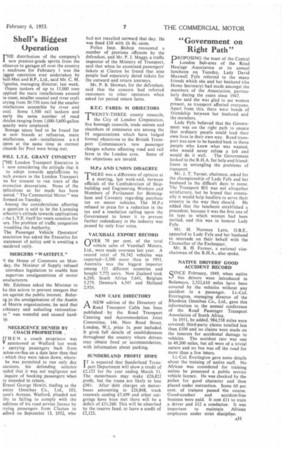NATIVE DRIVERS' GOOD ACCIDENT RECORD
Page 33

If you've noticed an error in this article please click here to report it so we can fix it.
SINCE February, 1949, when native bus drivers were introduced in Bulawayo, 2,522,610 miles have been covered by the vehicles without any accident to a passenger. Lt.-Col. Everington, managing director of the Rhodesia Omnibus Co., Ltd., gave this information to the annual conference of the Road Passenger Transport Association of South Africa.
In 1951, he added, 984,558 miles were covered; third-party claims totalled less than £100 and no claims were made on the insurers for accidental damage to vehicles. The accident rate was one in 49,200 miles, but all were of a trivial nature and no bus was off the road for more than a few hours.
Lt.-Col. Everington gave some details about the training of native staff. No African was considered for training unless he possessed a public service vehicle licence. He was checked by the police for good character and then placed under instruction. Some 60 per cent, of trainees passed /the course. Good-conduct and accident-free bonuses were paid. It cost £11 to train a driver and £12 a conductor. It was important to maintain African employees under strict discipline.




























































































